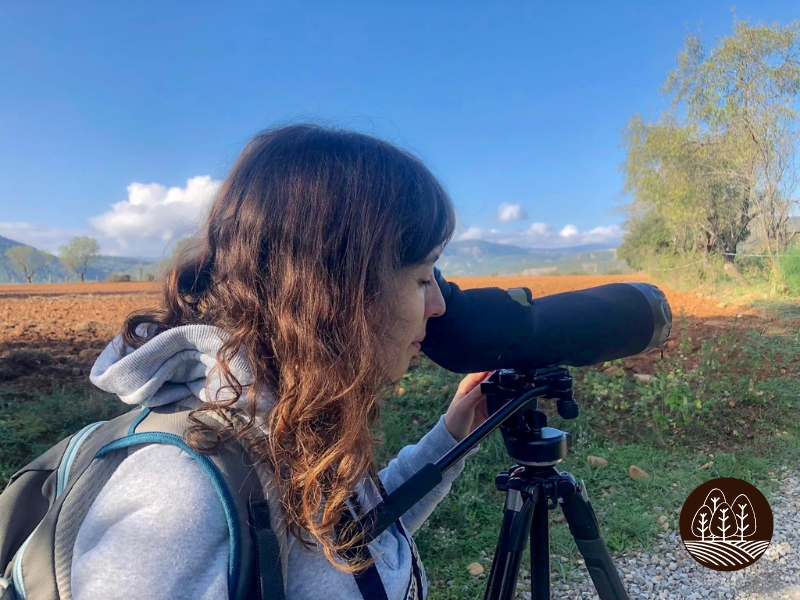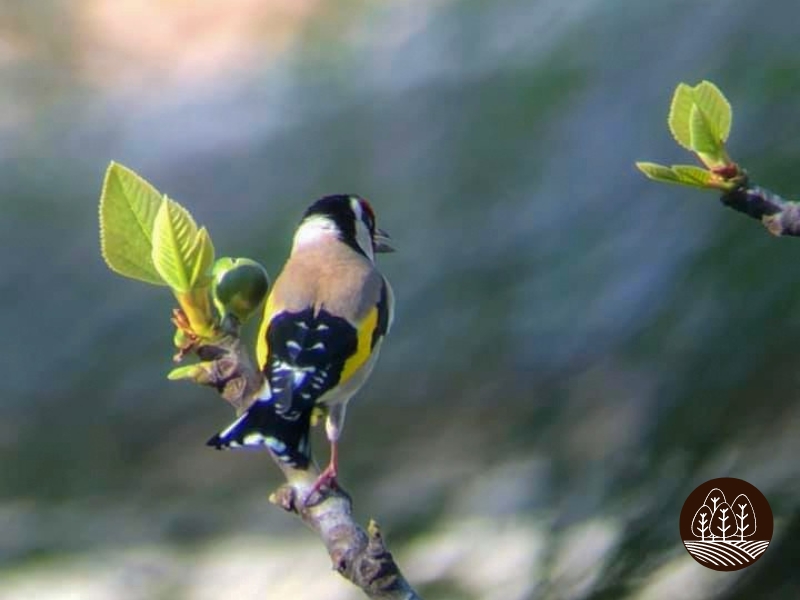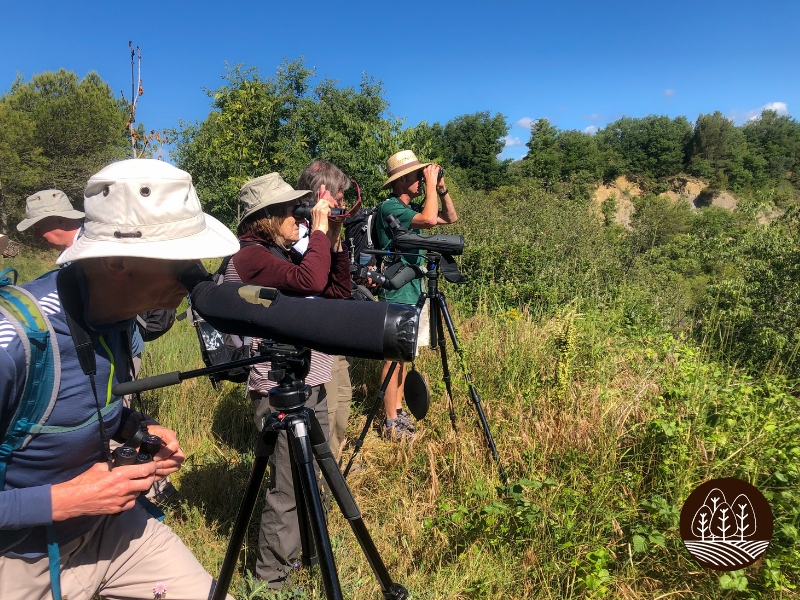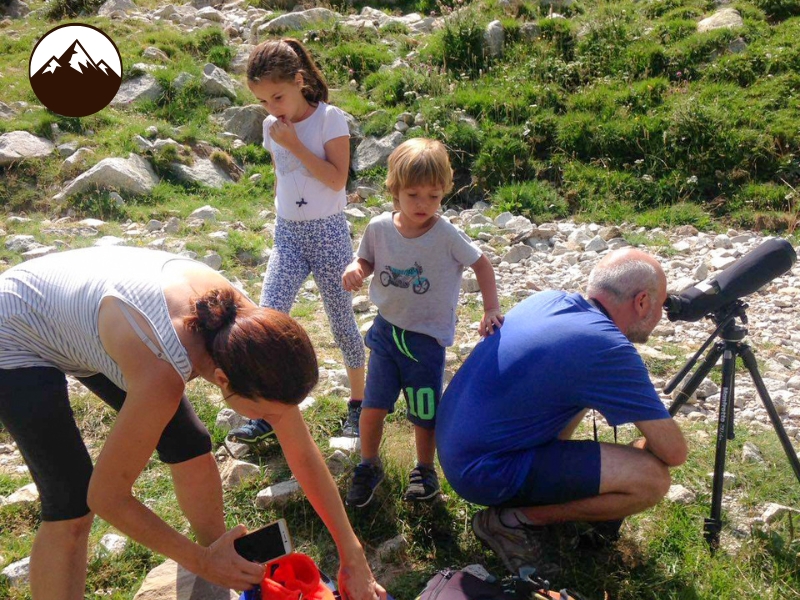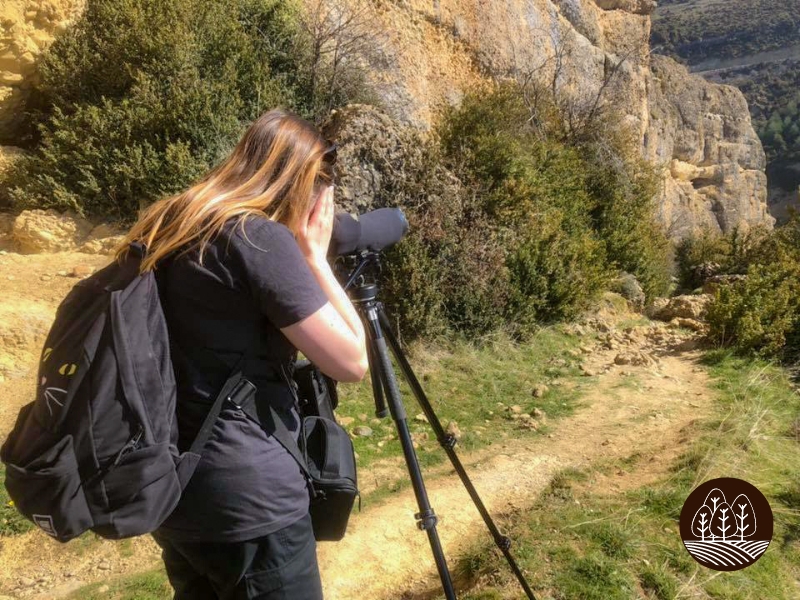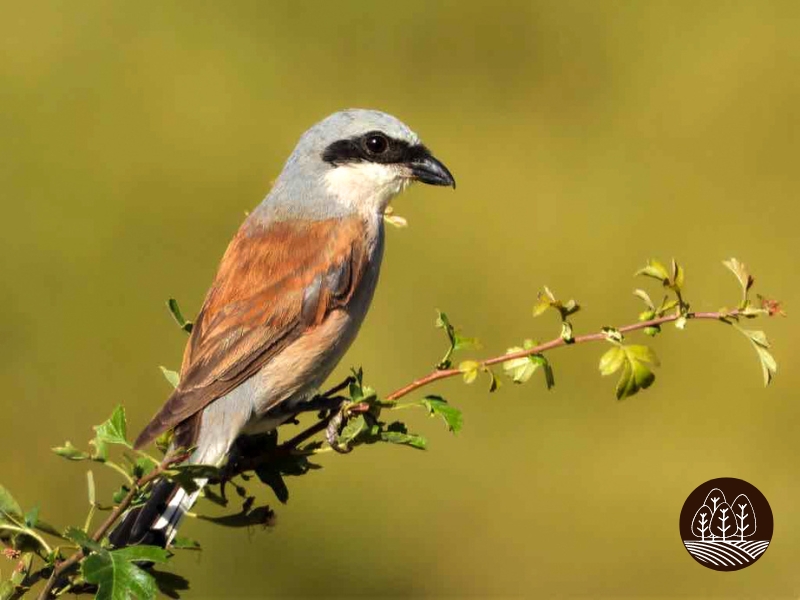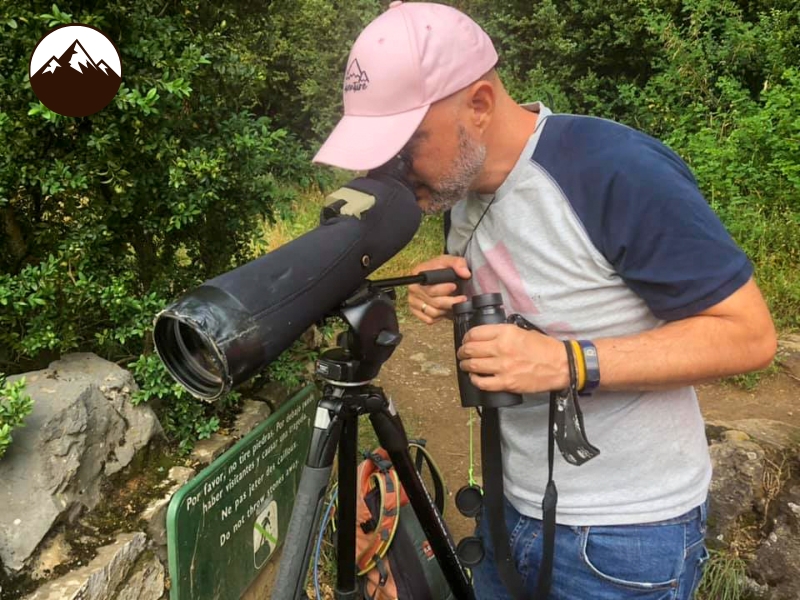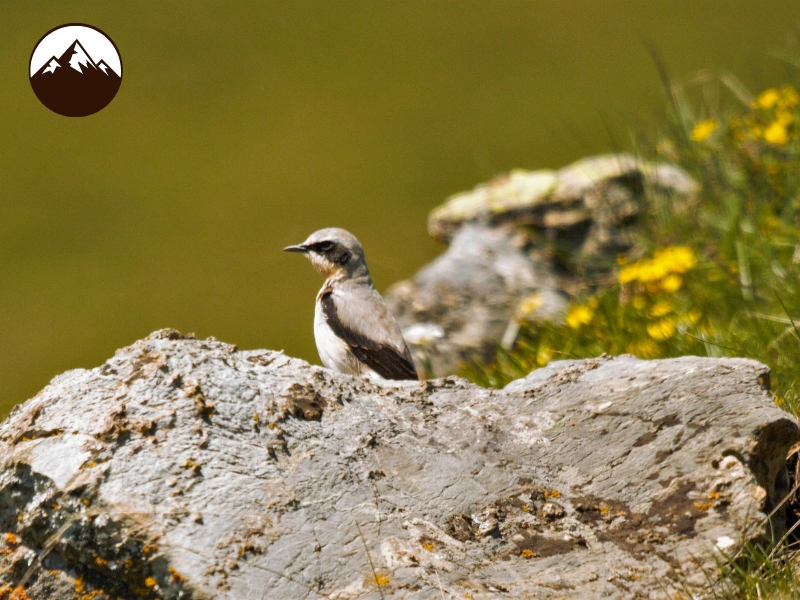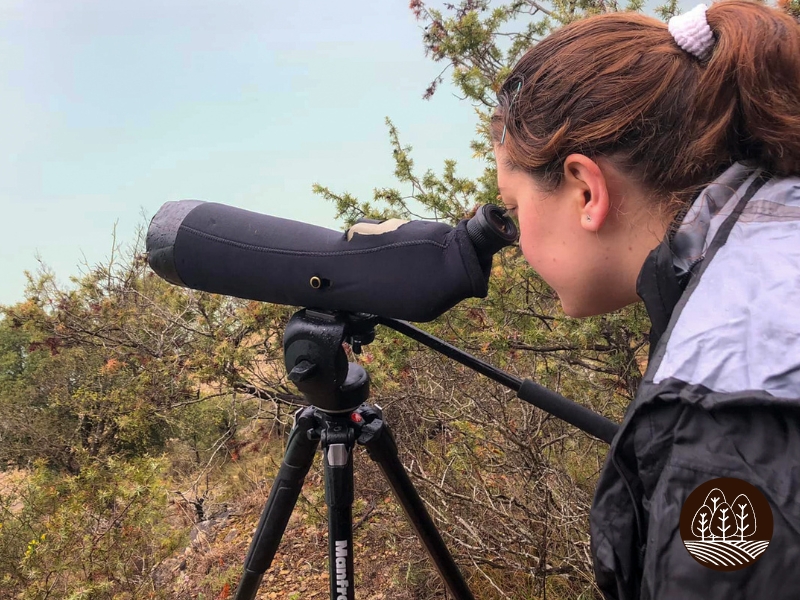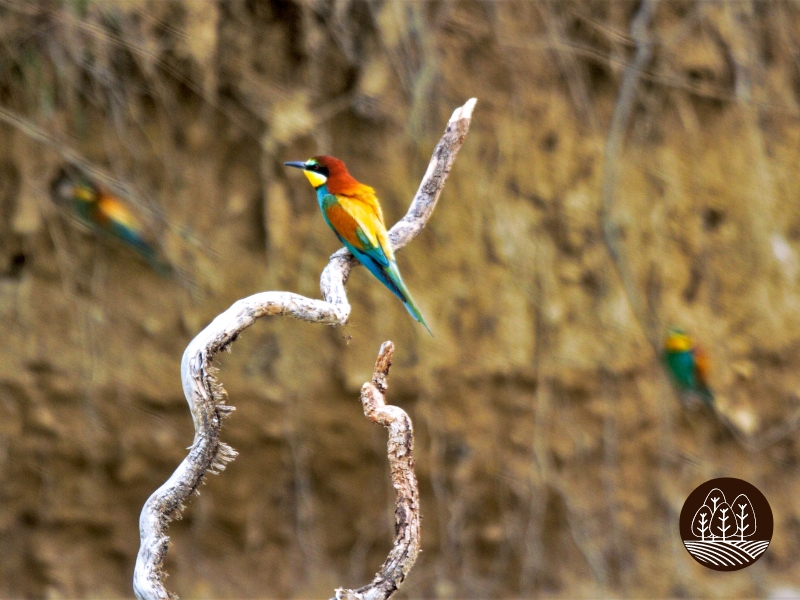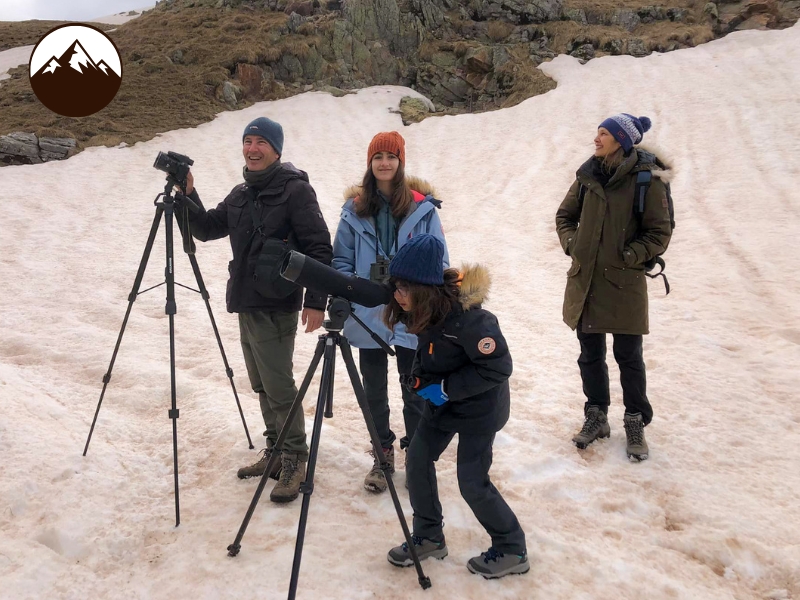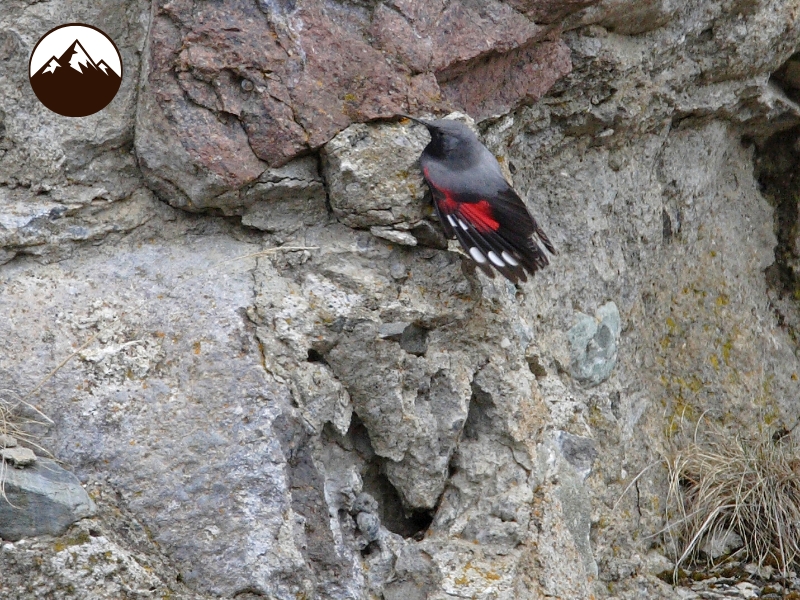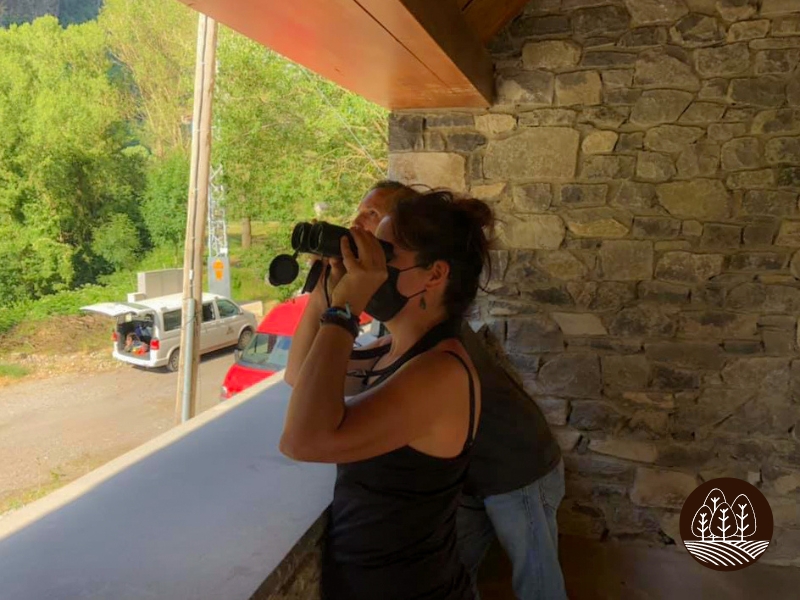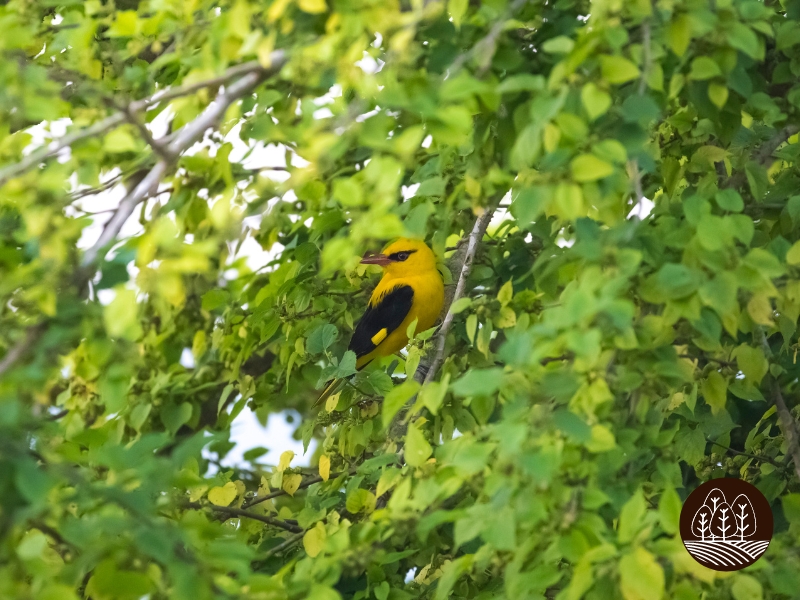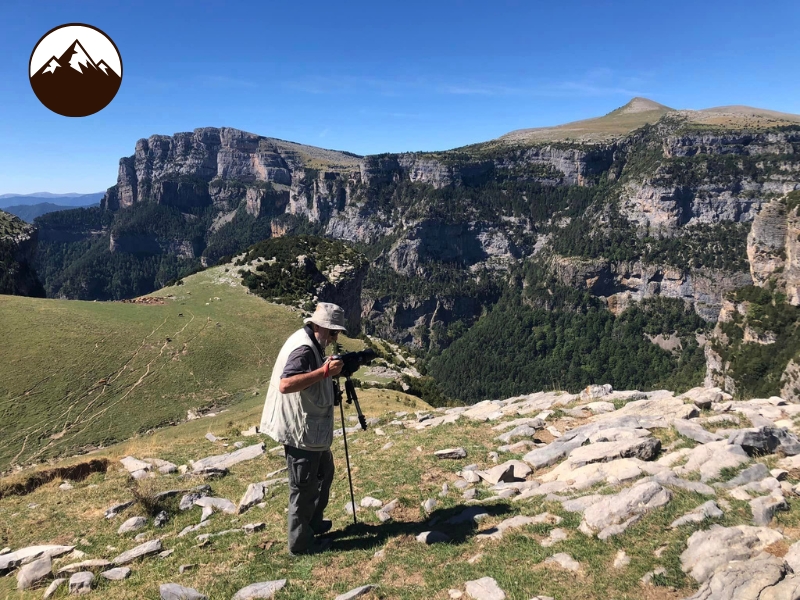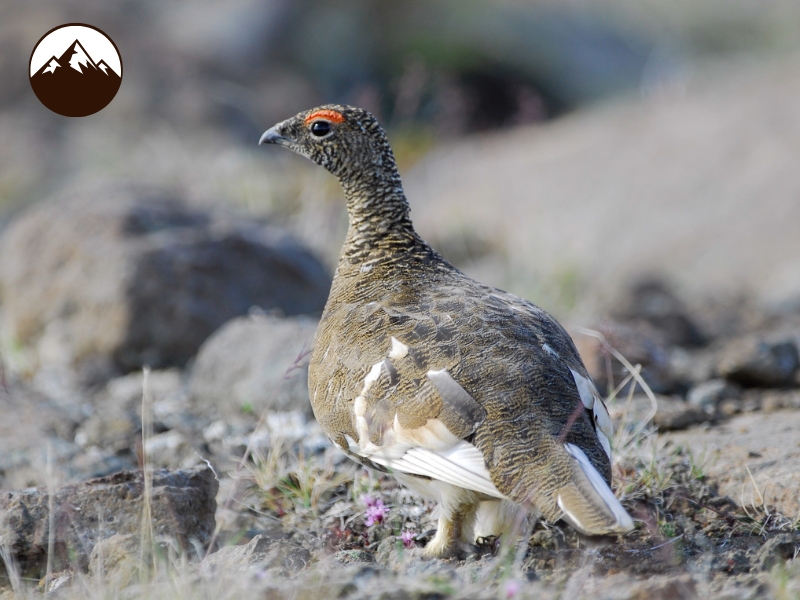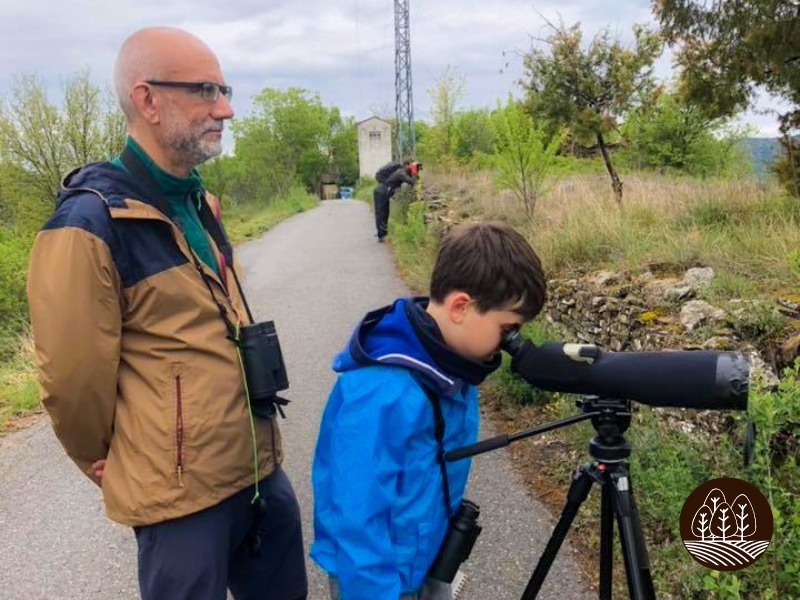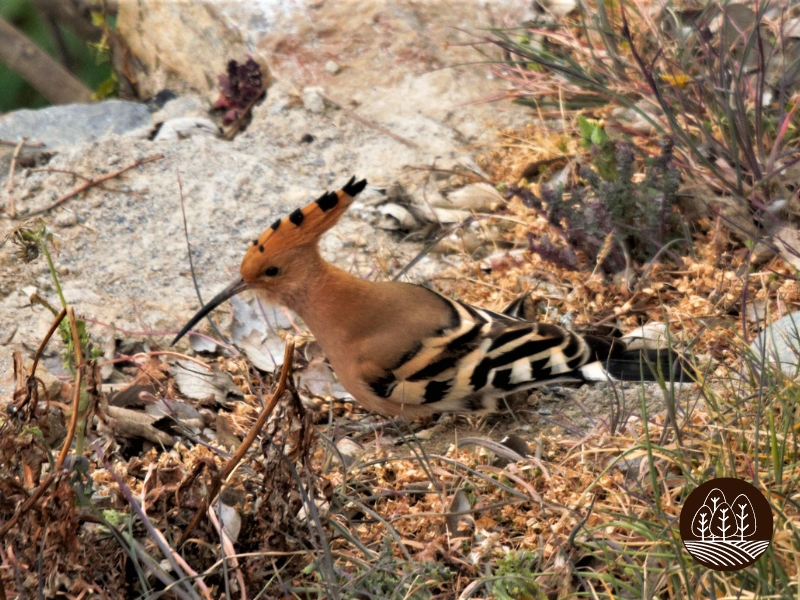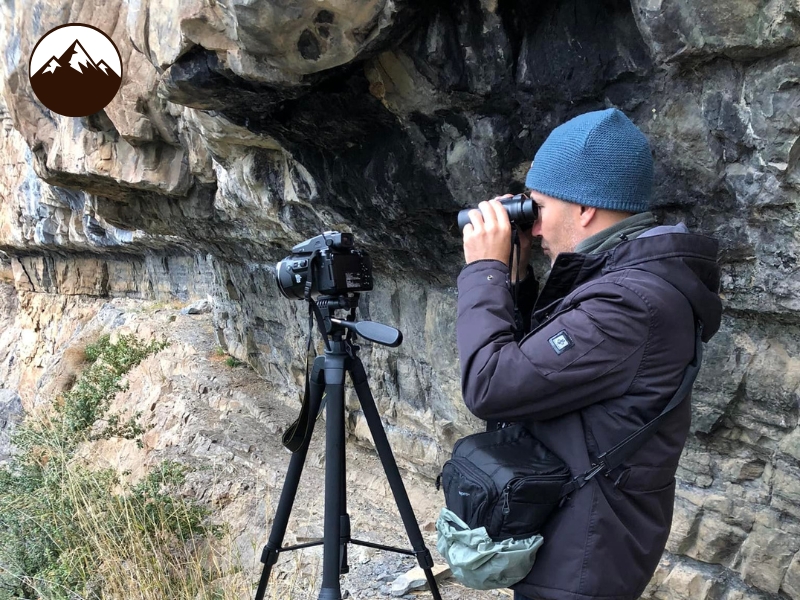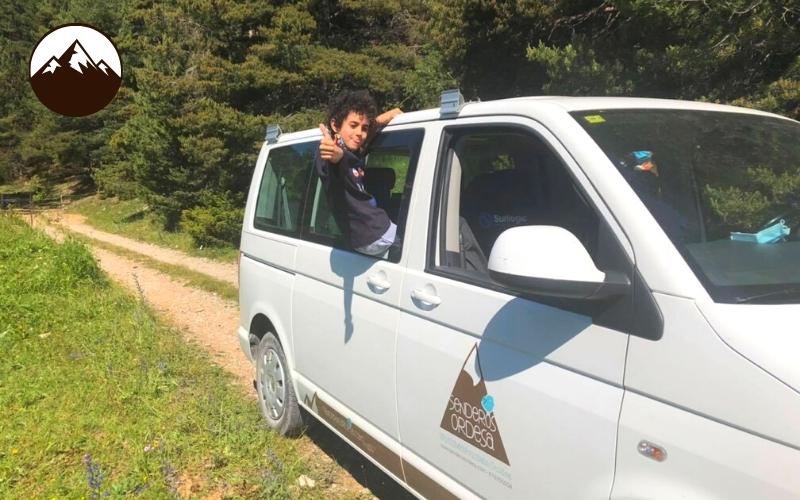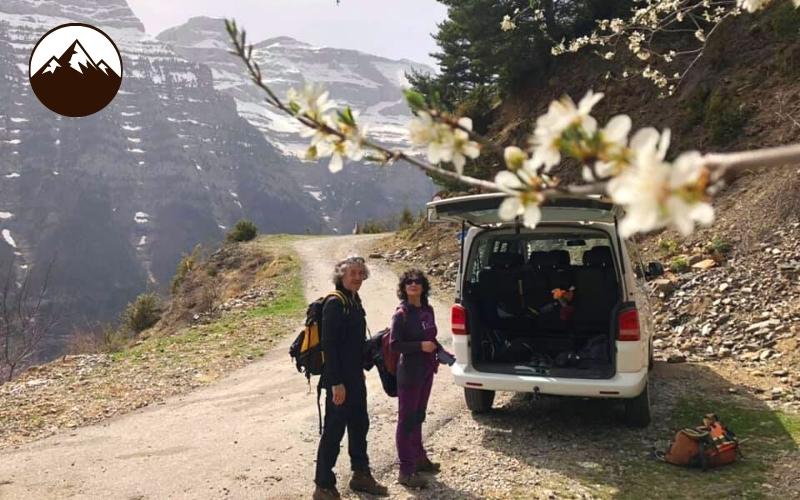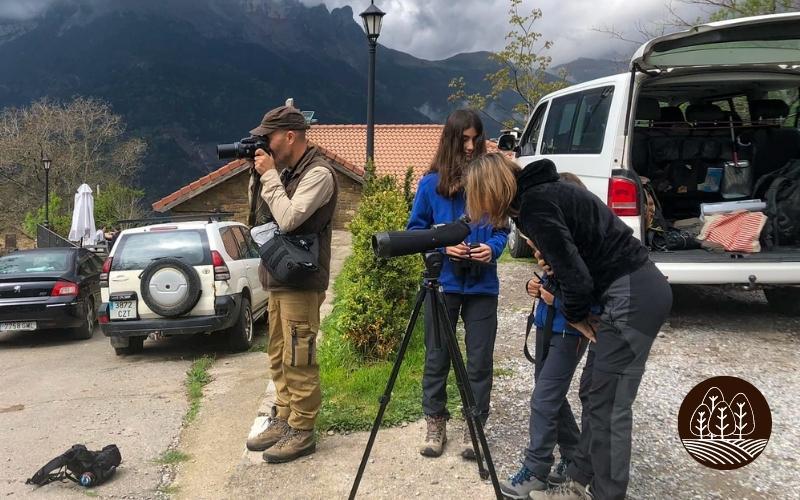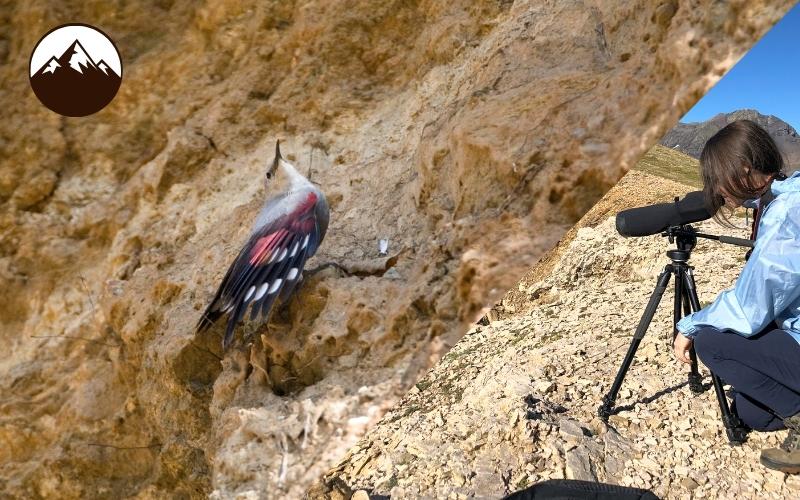birds of pyrenees
Discover the Birds of Pyrenees of Aragón reaching the best locations of the alpine habitat in our 4×4 vehicle or enjoy the Foothills of groves and crops: you choose!
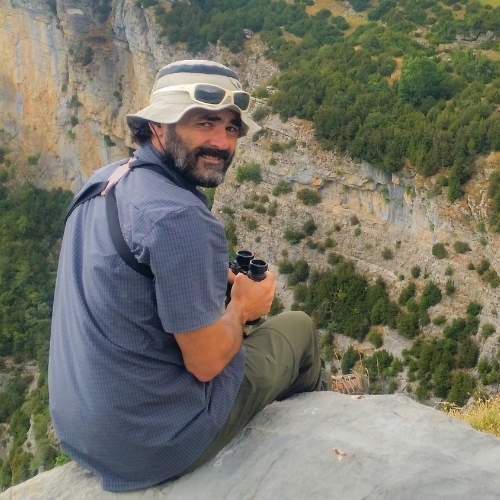

Hello! I welcome you to the Tour to see the birds of Pyrenees of Aragón; little jewels of nature. If you want to focus on seeing the great birds of prey, I recommend the Birds of Prey Tour.
Alberto Marin, birdwatching guide, former worker of the Fundación para la Conservación del Quebrantahuesos.
2 Habitats of the Birds of Pyrenees
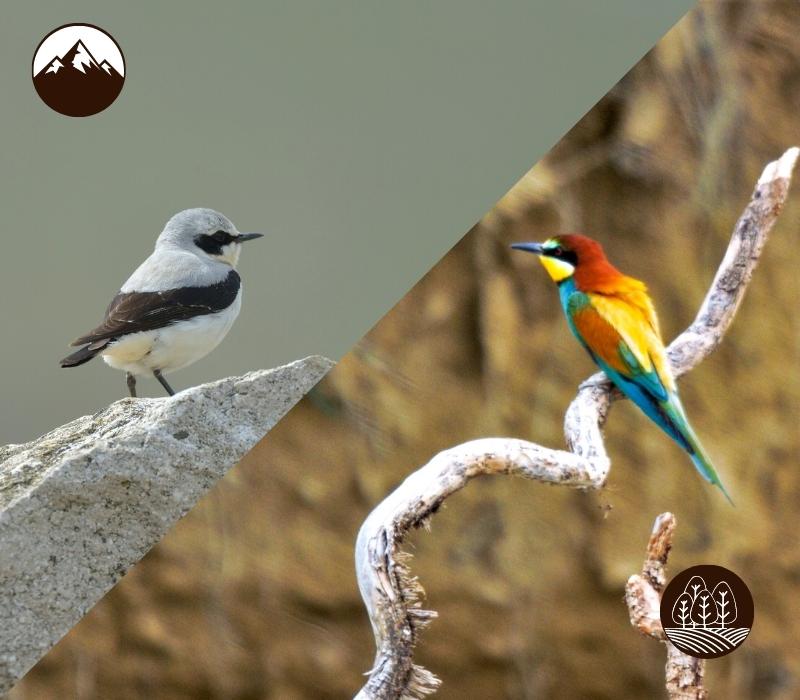
Most of the species of the avifauna of the Pyrenees are small birds. You hear their singing in the low areas/foothills and when you go up to well-preserved mountain areas.
Colorful, small or elegant birds. The Pyrenees is home to a large number of specialized birdlife in different natural environments.
The foothills of fields and riverside groves shelter the greatest diversity of birds. Some of them are very colorful and beautiful like the Golden Oriole, check them out below!
The alpine areas present more extreme habitats and the landscapes are truly impressive all through the access routes . Here we must be on the lookout for sightings of the alpine sparrow or the wallcreeper, “the butterfly bird”.
Birds of Pyrenees Tour
4×4 transportation included from your accommodation: We pick you up to begin a tour along the picturesque mountain tracks (if you choose alpine habitat) or to the most diverse enclaves (if you choose low lands/foothills).
→ slides →
Objective: to be in the areas with the highest probability of sightings.
What does the Birds of Pyrenees Tour include?
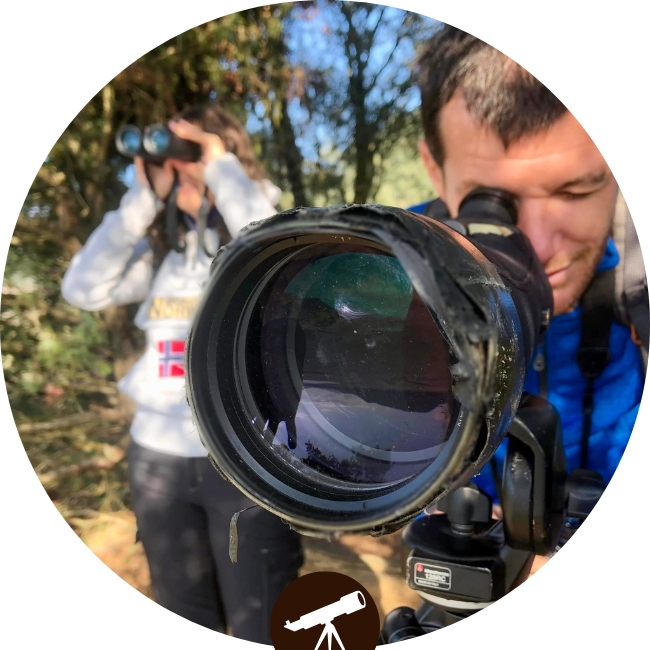
Optical gear
Observe the flight of the Birds of the Pyrenees up close with 10×42 binoculars that you have at your disposal throughout the tour. You can also observe through the telescope from the observation points.
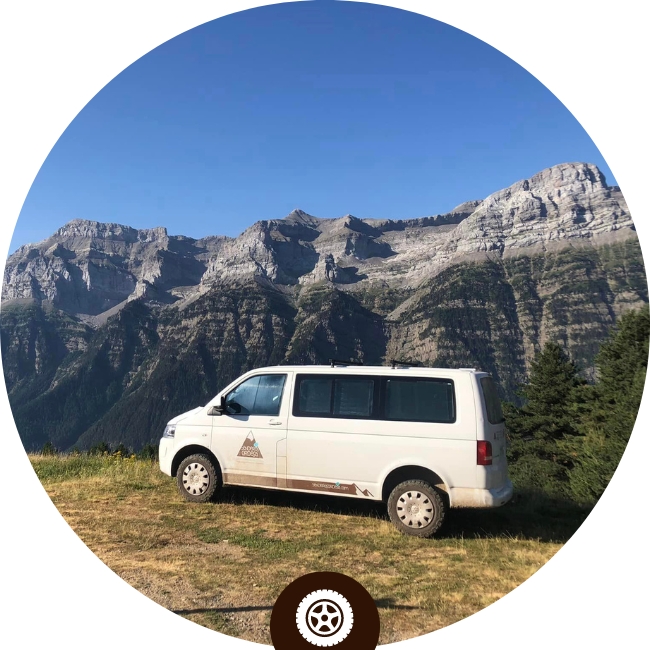
4×4 transport
Access the best observation areas of the alpine habitat or low areas optimally in a 4×4 vehicle. Pick up from your accommodation. Relax and enjoy!
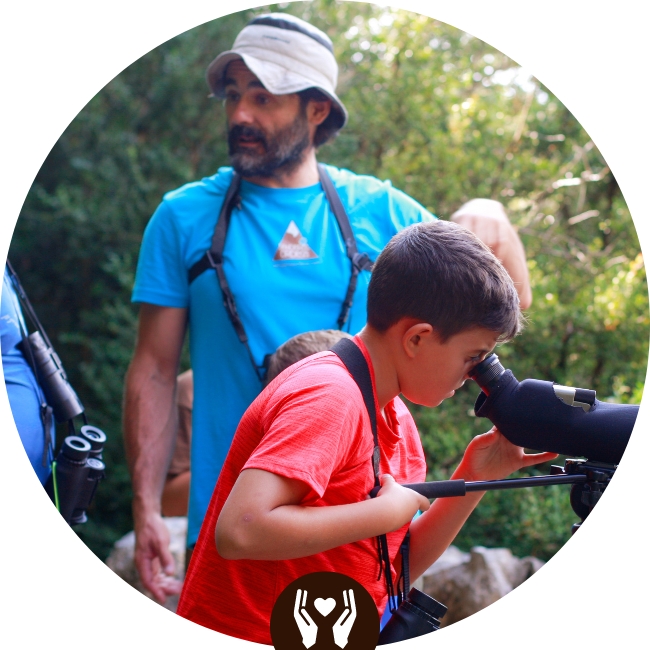
Specialized Guide
Where to see the most exuberant migratory birds? What are the best viewing areas in the mountains? What bird is that?!
The Birds of the Pyrenees Tour answers these and other questions
The Pyrenees Birds of Prey Tour is organized only for small groups (maximum 7 people) for a better experience.
MEDITERRANEAN FARMLANDS, GROVES AND FORESTS TOUR
Low lands/ Foothills- 4/5 hours: depending on the observation conditions
- Minimum 3 people. Smaller groups, ask me on Whatsapp
- Optical Gear: individual binoculars and telescope for group use
- Specialized Guide: Discover much more
- 4×4 transportation from your accommodation
Ask for Private Tour
ALPINE BIRDS TOUR
Alpine zone- 6/8 hours: depending on the observation conditions
- Minimum 3 people. Smaller groups, ask me on Whatsapp
- Optical Gear: individual binoculars and telescope
- Specialized Guide: Discover much more
- 4×4 transportation from your accommodation along picturesque mountain tracks
Ask for Private Tour
What do they say about our birdwatching experiences?
Phases of the Birds of Pyrenees Tour
Foothill Areas / Alpine Areas
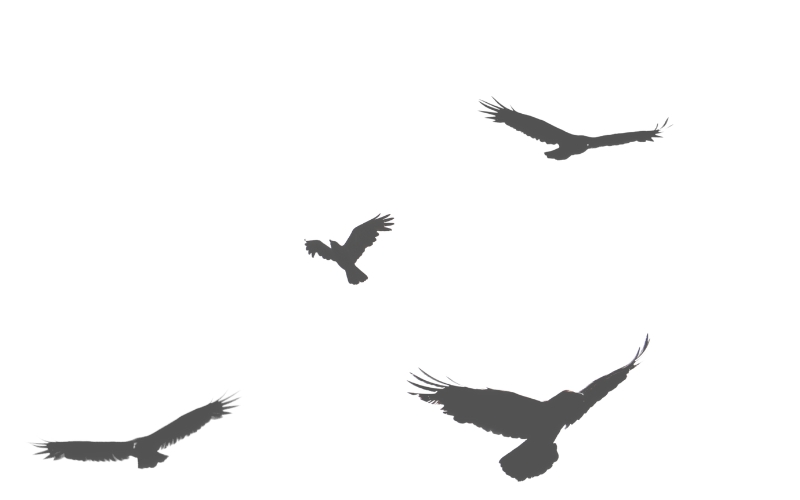
Reserve your day
Book your Birds of Pyrenees Tour, as long as the day you want is free, and we agree on the time and place to pick you up.
Pick up and Transportation
We pick you up directly at the doors of your accommodation in a 4×4. And start the journey to the alpine areas of observation through varied landscapes, only accessible with the right vehicle.
In the case of the lowlands, we head to different birding spots in the Pyrenees between abundant riparian forests, large fields of crops and Mediterranean forest strongholds.
→
→
Observation
Now you can start using the binoculars and the telescope. Alpine viewing areas are on mountain meadows or massifs with beautiful panoramic views.
In the foothills we make stops at different observation points. Here the birds are distributed in different nearby habitats of greater diversity.
The objective is to make stops in the best enclaves of each environment to maximize the possibilities. The highlands present more impressive environments with the added possibility of seeing large birds of prey.
On the other hand, in the foothill areas you have the opportunity to see more species in more varied environments; including the most colorful migratory species during the summer.
Return
Final check of the species observed and return to your accommodation enjoying the landscape.
So far the experience to see one of the natural jewels of the Pyrenees: its rich and varied bird life.
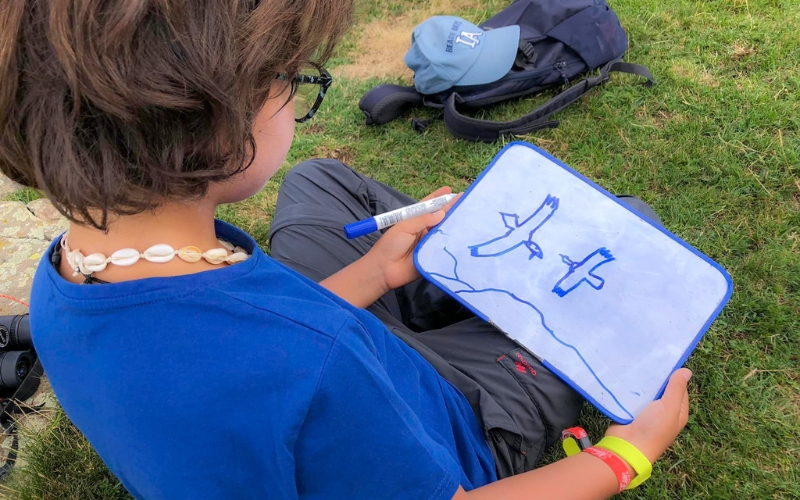
Birds of Pyrenees Frequently spotted on the Tour
Discover the birds you can see during the Birds of Pyrenees Tour. There are a large number of birds that fly freely throughout the territory, so at a probabilistic level it is difficult to see them all in a single day.
The tour locations vary depending on whether you choose the alpine variant or the foothills. The alpine areas are more impressive with birds unique to this habitat. However, if you want to see a larger number of different species, the foothills are better for you.
Alpine birds of Pyrenees
Observation points located in high mountain meadows and rocky cliffs. There is also the possibility of seeing birds of prey such as the bearded vulture or the red kite (see the Birds of Prey Tour if birds of prey are your main interest).
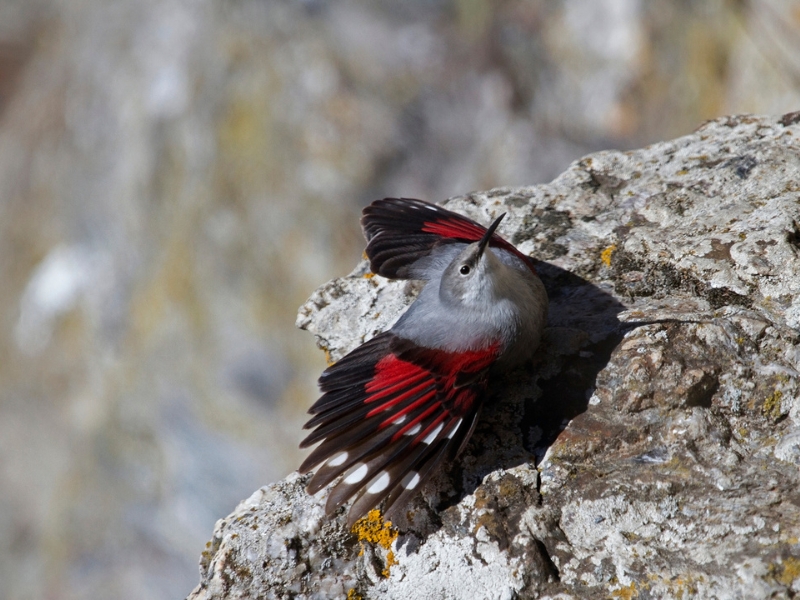
Wallcreeper
Length: 15-17 cm
Known as the “butterfly bird” for its erratic flight. It feeds on insects that take refuge in the cracks of the large limestone walls, being a specialist in its capture.
It is a Pyrenean bird totally linked to its alpine habitat (1000 – 3000 m). During the winter it migrates to more temperate areas in the outer mountains of the Pyrenees.
If it is perched it easily blends in with the color of the rock, but as soon as it takes flight you will easily distinguish it by the striking reddish color of its wings.
Alpine chough
L: 36 – 39 cm
The high mountain corvid par excellence. It is also one of the birds of Pyrenees with the larger global distribution area: from the Atlas to China.
Its diet is based on invertebrates that it looks for in the high mountain meadows, although, after having created dependence on the rural environment in the past, it also looks for remains in picnic areas and viewpoints.
Some birds of prey, such as the booted eagle, can prey on the Chough.
You can easily differentiate it by its call, different from that of the Red-billed Chough: a <Priiii> in a high tone.
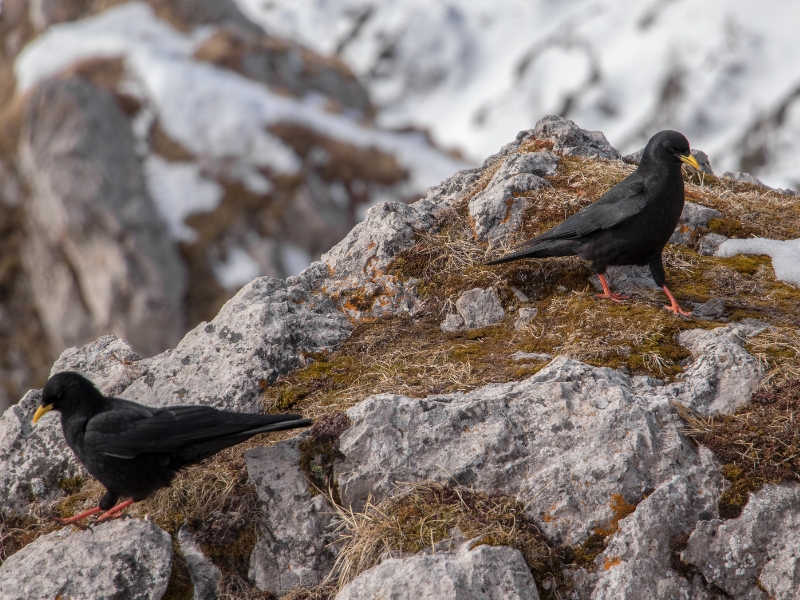
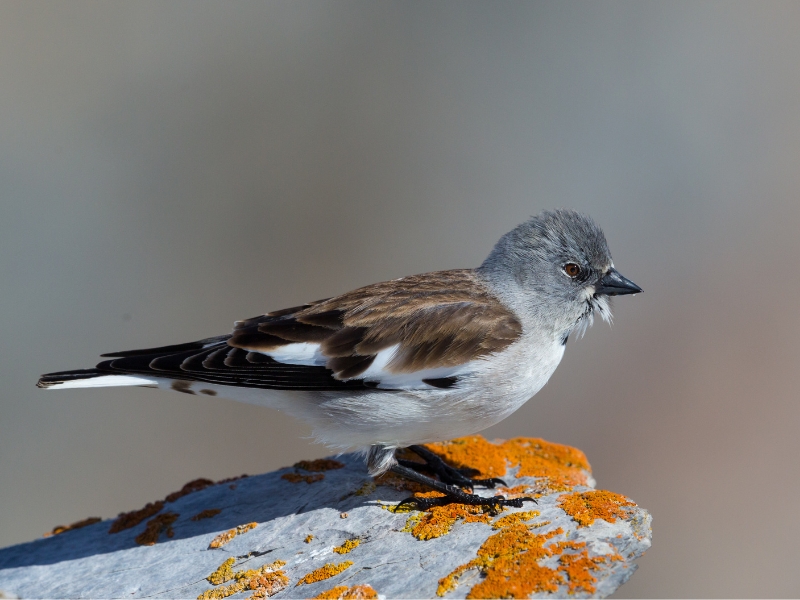
Alpine Sparrow
L: 15–17.5 cm
Larger and more stylized than its relative the Common Sparrow. Curiously, the color of the beak changes according to the time of year and the gender.
It is the alpine passerine par excellence of the Pyrenees, although it also resides in many other mountain ranges: from the Himalayas to the Picos de Europa.
Flocks of eighty specimens or more have been seen traveling together through the alpine areas, will you have that fortune?
It is easy to distinguish when it flies in a group or by its appearance somewhat similar to the house sparrow.
Water Pipit
L: 16 – 17 cm
Pipits are small passerine birds characterized by their long tail and elongated beak. The Water pipit is linked to water points, like the rest of the pipits.
For this reason, it is found in open pasture areas near streams or flooded areas above 1500 m.
You can easily differentiate it by its elongated appearance. In the alpine habitat it is the only bird of the Pyrenees that you will see with this appearance. Its song is long and repetitive, usually sang before plummeting to the ground.
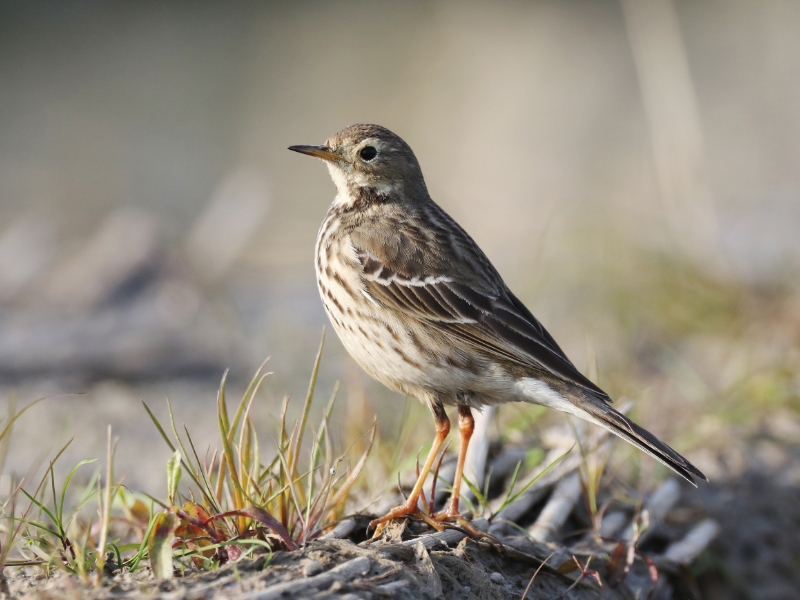
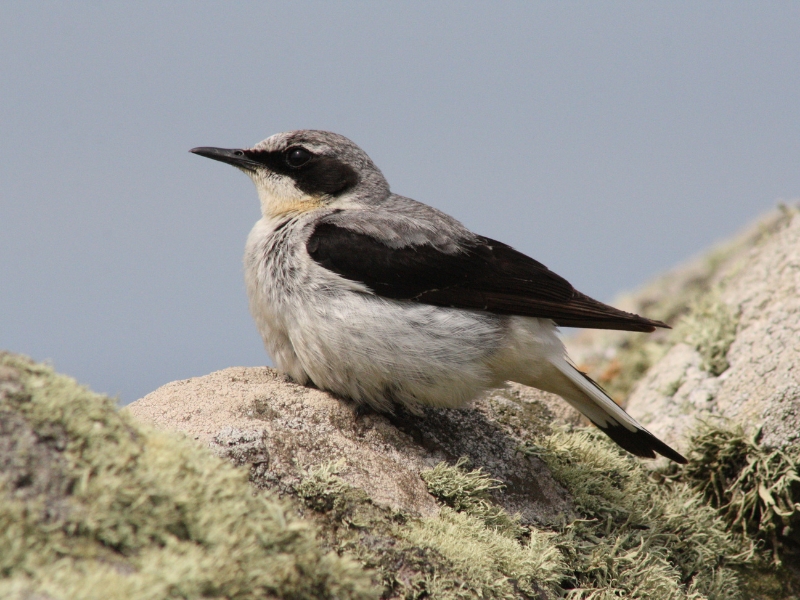
Northern Wheatear
L: 14 – 16,5 cm
The Bird of the Aragonese Pyrenees with a black mask on its head, which they lose with the autumn migration.
At the slightest sign of danger, it emits its clicks to warn the rest. It usually perches in flat areas of meadows with herbaceous vegetation.
You can distinguish it by its mask in summer or by its white tail with an inverted black T.
Rufous-tailed rock thrush
L: 17 – 20 cm
Particularly beautiful alpine bird. Needs an specific habitat structure: open grassy areas with bushes and rocks.
If the habitat is suitable, it can be seen above 2000 meters of altitude. It arrives in the Pyrenees in April to breed and flies to Africa at the end of summer to spend the winter.
It is an unmistakable bird of the Pyrenees at the end of summer, when they shed their plumage and males and females present the reddish brown on their chest. Before this moment you can tell it apart by its vermilion blue head or its reddish tail all year round.
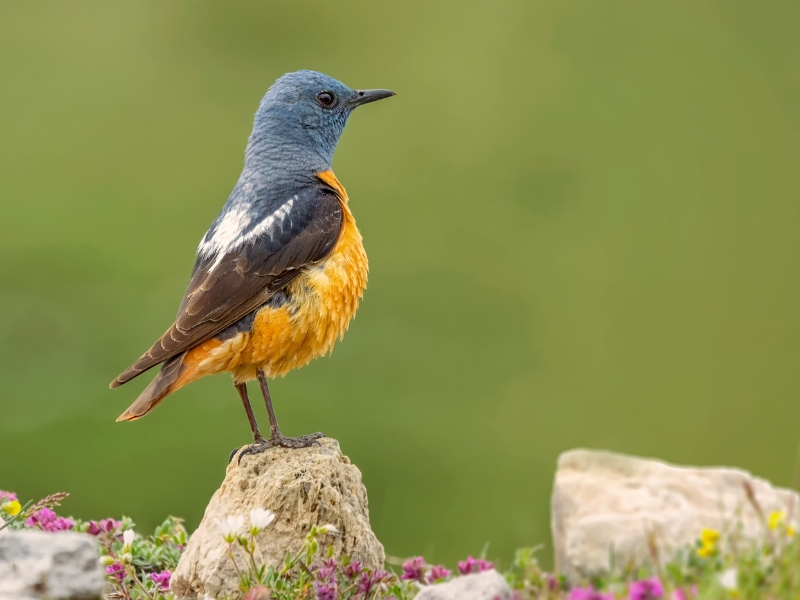
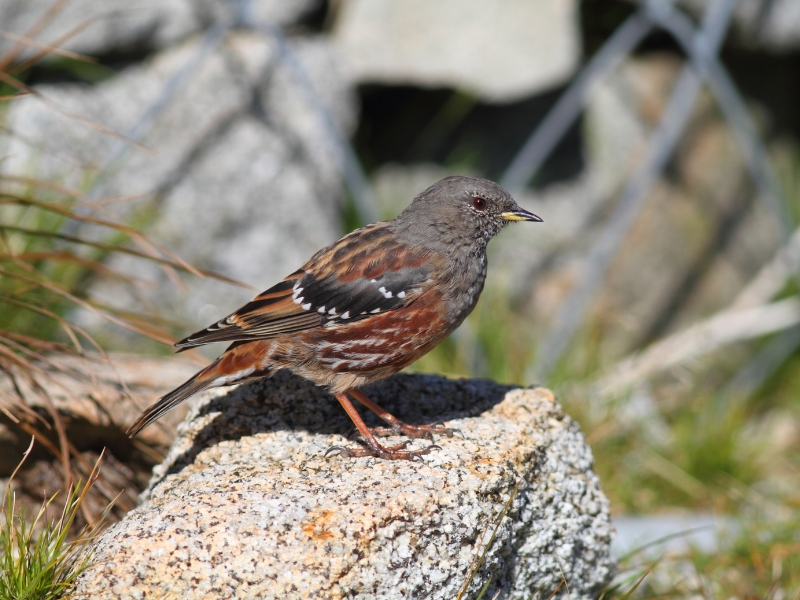
Alpine accentor
L: 15 – 17,5 cm
The bird of the Pyrenees that frequents the areas at higher altitudes, even exceeding 3000 m; where it is often the only resident species.
It is common to see him on the Alpine Tour for his confident attitude and abundance. In winter it migrates to the outer mountains of the Pyrenees, although some stay near the ski slopes and refuges.
Easily recognizable by its reddish tone on the flanks and the base of its yellow beak if you take a closer look. In case you hear it, its singing is quite irregular.
Rock ptarmigan
L: 34 – 36 cm / Wingspan: 54 – 60cm
It inhabits the highest areas of the Pyrenees: meadows and shrubby slopes.
It is a vegetarian bird, it looks for its food in roses, dwarf mountain willows or blueberries. Probably the most difficult bird to see in the Pyrenees, as it is the queen of camouflage.
It is a curious bird of Pyrenees to see, with great survival skills. During the winter its plumage is white, changing to speckled in spring and summer.
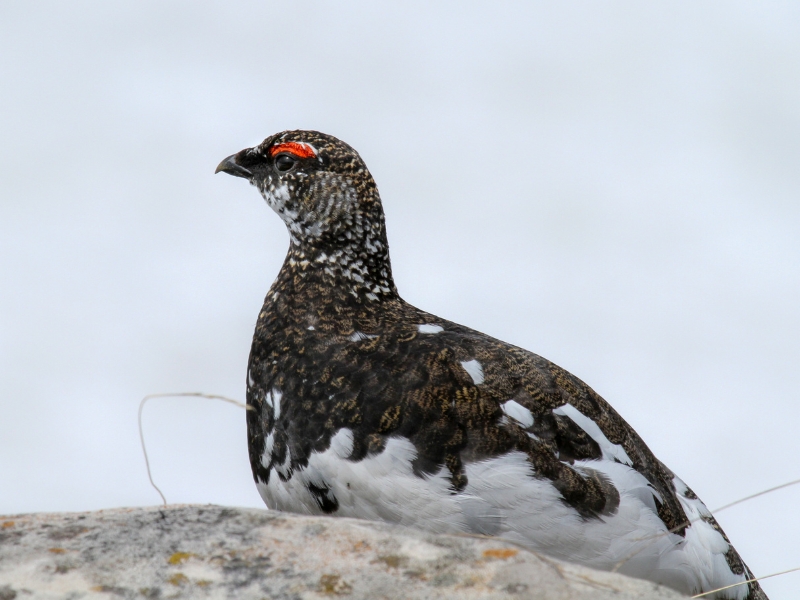
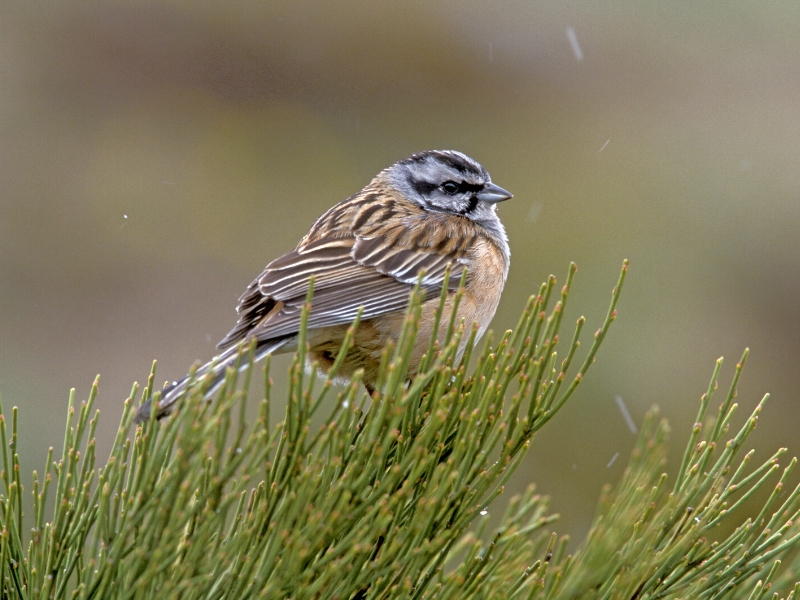
Wild Bunting
L: 15 – 16,5 cm
Is the Bunting of higher areas. It breeds on the slopes at the edge of the forest. It is a granivorous bird of Pyrenees, like the rest of the Buntings.
During the Birds of Pyrenees Tour, you can get to see it in the alpine meadows or at certain observation points above 2000 m.
It is easily recognizable by its brown color and its black lines over the grey face.
Birds of Foothills of Pyrenees
The Tour runs through farmland, riverside forests and Mediterranean forest. There is also the possibility of seeing the Egyptian vulture, Buzzard and the Red kite, among others. If your interest is the raptors of the lowlands, write to me now.
Given the great variety of species that might be spotted, you can find here the most frequent or striking ones you might see on the tour.
European oriole
Largo: 22 – 27 cm
One of the most strikingly colored birds of Pyrenees. It can be spotted in the foothills during the summer.
It is a species closely linked to Mediterranean forests with an abundance of small fruits and berries.
Its differentiation is obvious by its bright yellow and red bill; it is the size of a common blackbird.
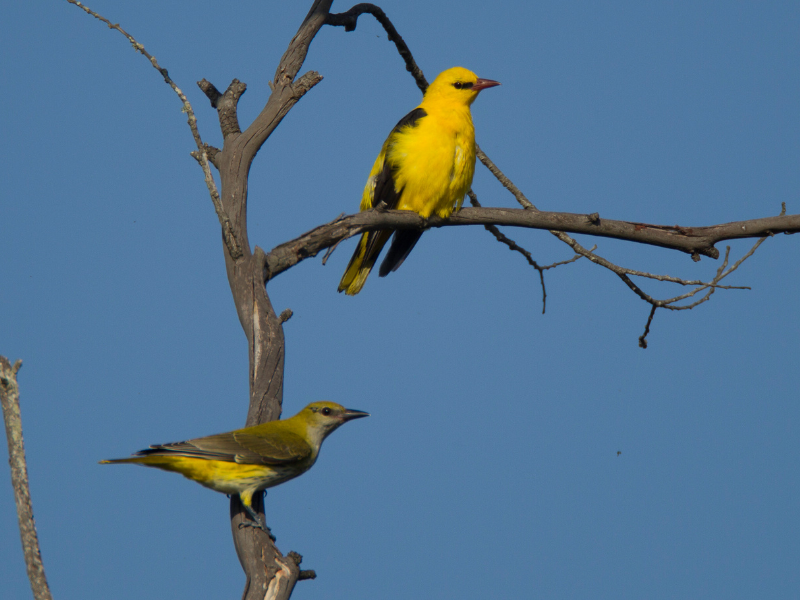
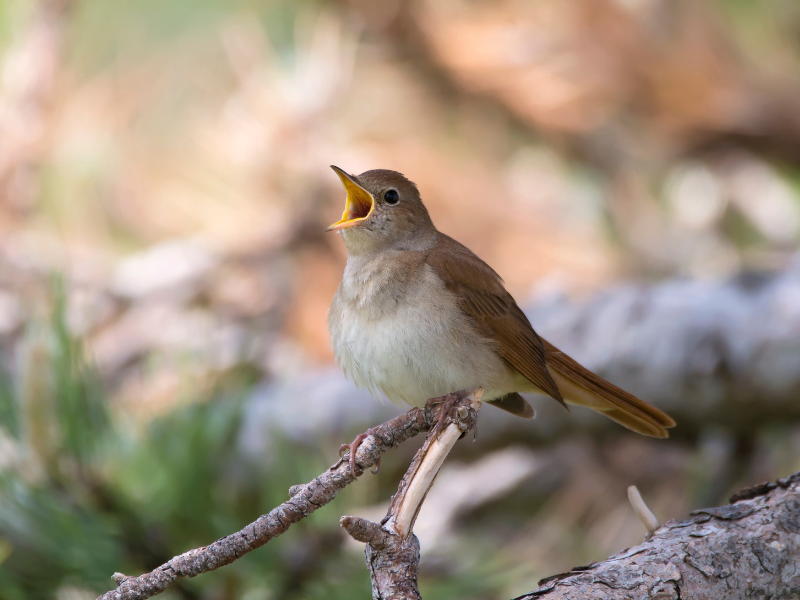
Common nightingale
L: 15 – 16,5 cm
The mythical nightingale is one of the shyest and most elusive birds of Pyrenees. In addition, its plumage is very cryptic with dark brown tones.
If you see it during your Tour, feel lucky for it. It lives in humid wooded areas near rivers or ravines without exceeding 1200m.
You can distinguish it by the strong and melodious song it emits from the vegetation. If you happen to see it, you can confirm its presence by its gray breast and reddish tail.
Red-backed Shrike
L: 16 – 18 cm
The miniature bird of prey of Pyrenees. If you see small mammals or birds impaled in a tree in the medieval style, the Shrike is close.
Not having the claws of a bird of prey, it sticks its prey into branches in order to feed itself. It is a bird present in the summer.
It prefers open environments with thorny bushes for obvious reasons.
You can distinguish the male by the gray head with the black mask and the female by the whitish underparts; both with a reddish back. It also stands out for its upright posture on the perches.
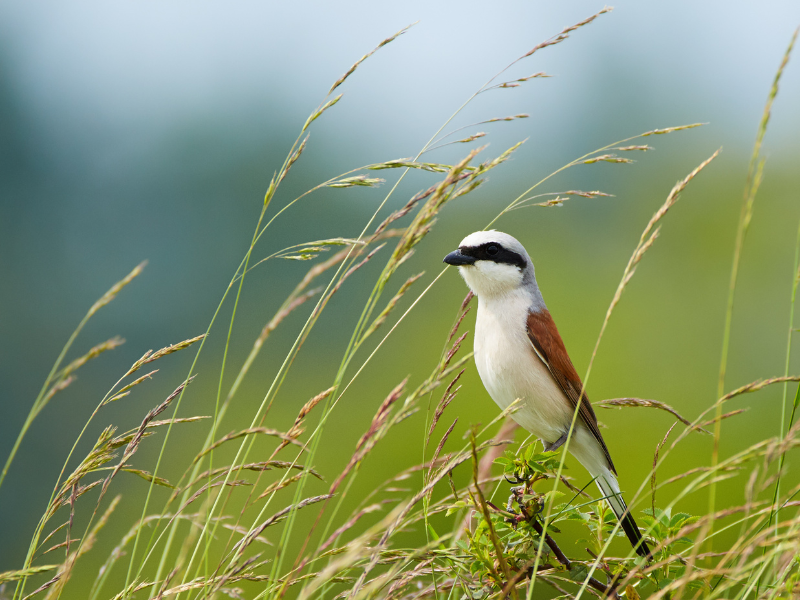
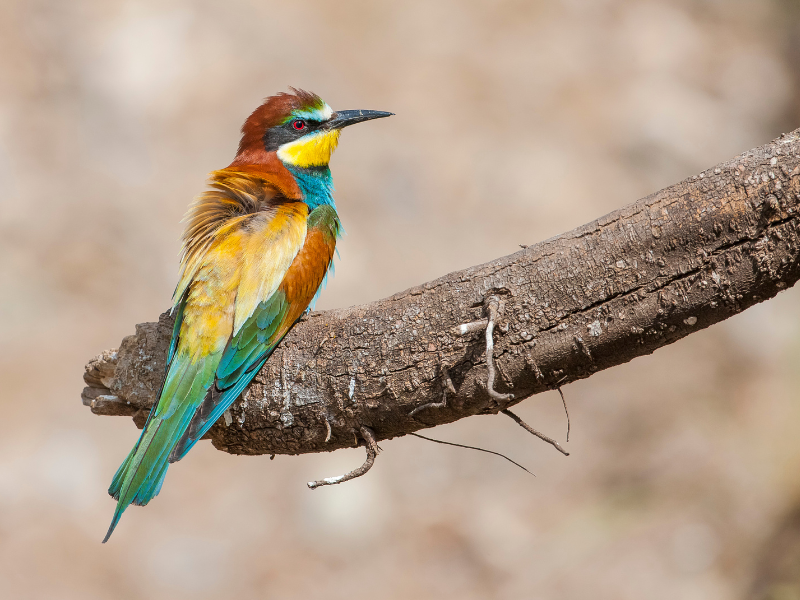
European bee-eater
L: 25 – 29 cm / E: 36 – 40 cm
One of the most colorful birds of Pyrenees that you can see during your tour, a real gem.
It winters in the tropics of Africa and comes in the spring to breed. It usually breeds on sandy slopes on the banks of rivers .
It feeds on large insects (bees, wasps and dragonflies). It is possible to see them flying in groups in mountain passes in search of large insects before their return to Africa in August/September.
It is easy to differentiate by its beautiful combination of yellow, blue and reddish colors.
European goldfinch
L: 12-13,5 cm
Famous for its song, it is the bird of Pyrenees most named in popular literature for its melodies.
Frequent in pastures and crops with the presence of trees. The Goldfinch is specialized in extracting the seeds of plants such as thistles. It is a resident of the Pyrenees. In winter more specimens arrive from colder areas of Europe
It is really easy to identify it by its red head and the rest whitish-black. In addition, its song stands out among the rest of the birds.
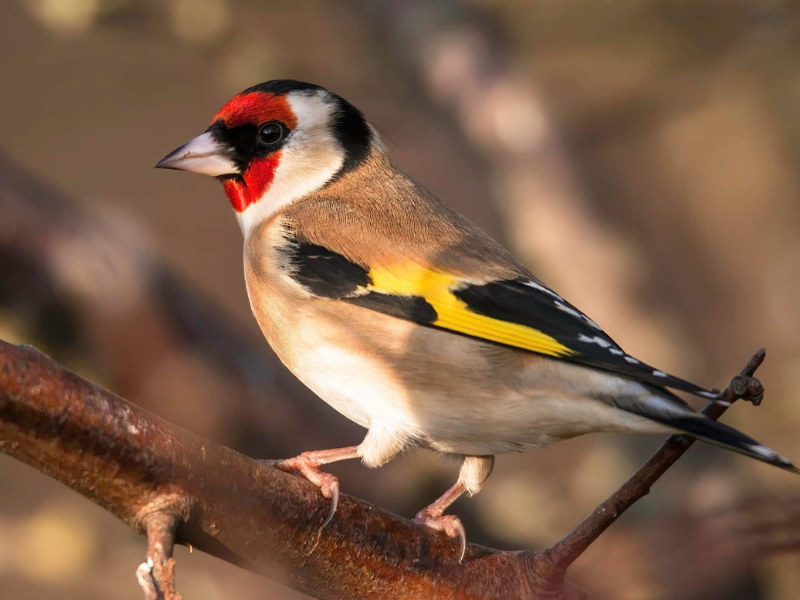
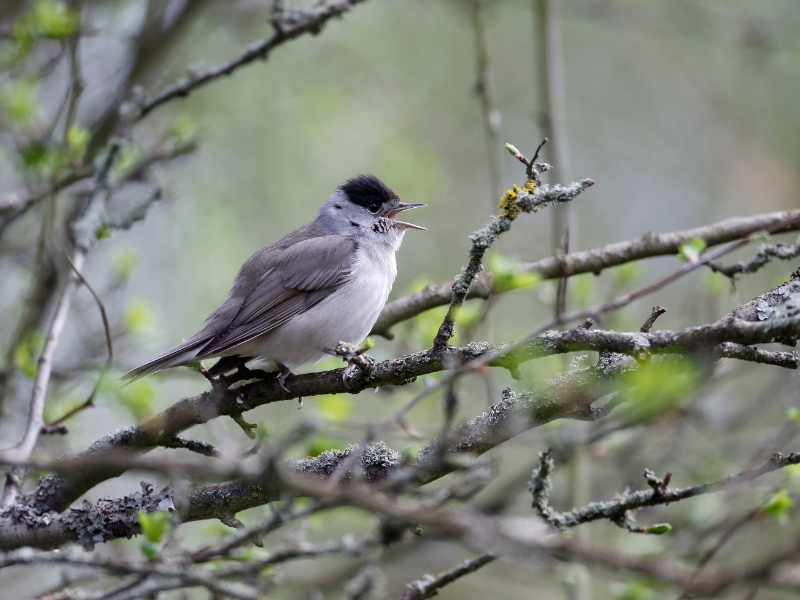
Eurasian blackcap
L: 13,5 – 15 cm
Insectivorous bird of Pyrenees of Aragón, like the rest of the warblers. It differs from the Garden warbler by its characteristic cap.
It adapts to all types of forests, as long as the vegetation is high. During the winter it moves outside the Pyrenees. It emits a powerful and somewhat crazy song as if it were in fast motion.
You can distinguish it by its grayish color and the black “cap” on its head.
Tree Sparrow
L: 12 – 14 cm
This variant of the house sparrow is characterized by being less dependent on human presence.
During the Tour, we stop in the cereal fields to watch this bird. Of course, the environment must have trees to guarantee their presence.
You can distinguish this bird from Pyrenees by its flight in flocks of dozens of specimens; a beautiful image.
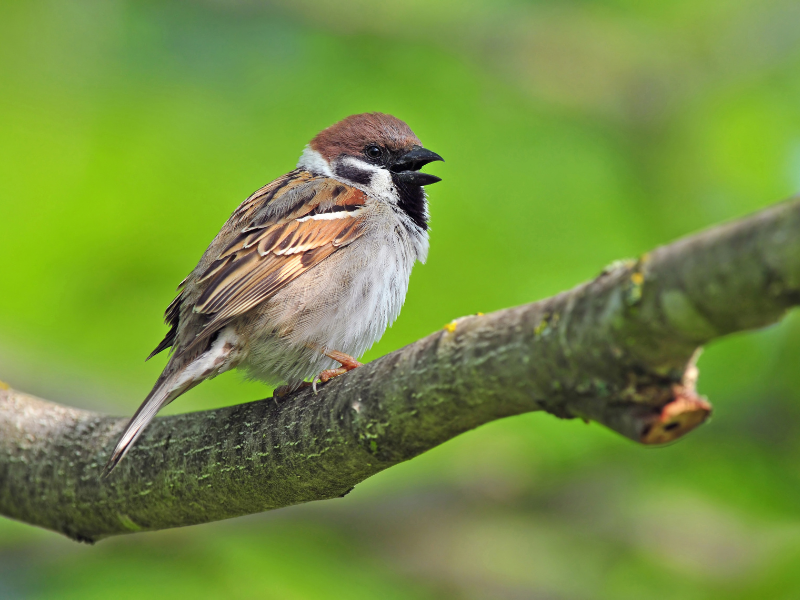
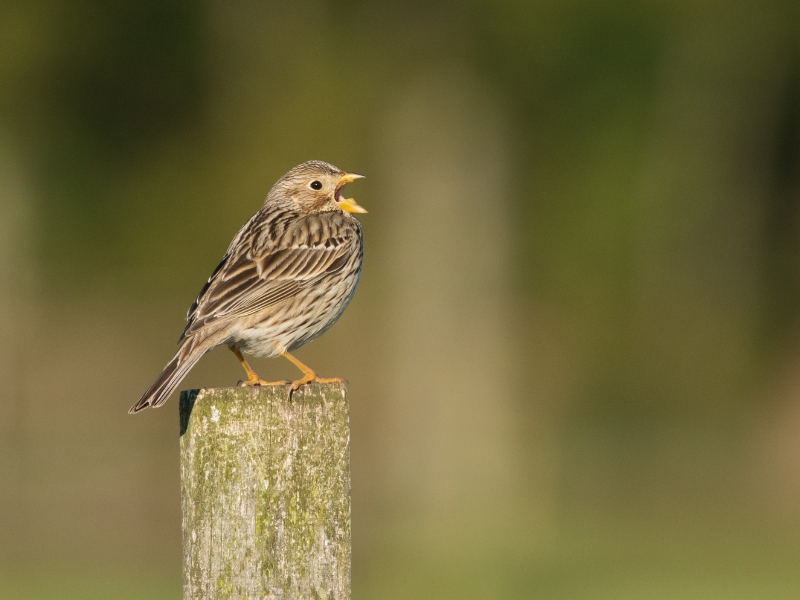
Corn bunting
L: 16-19 cm
Buntings are passerines that feed preferentially on grain. The Corn bunting is one of the most voluminous birds of Aragonese Pyrenees. Curiously, it recently appeared in some areas of the higher Pyrenees such as the Ordesa National Park.
It is common in non-industrialized agricultural areas as the ones we visit during the Tour, where they spend much of their time on the ground.
Recognize it by its size somewhat larger than other passerines and its grayish-brown striped plumage without distinctive features.
European stonechat
L: 11,5 – 13 cm
Small bird with a conspicuous behaviour, it perches on visible branches where it emits its call.
Typical inhabitant of bushy areas, crops or abandoned pastures. It can reach an altitude of 2,000 m, although during the Tour it is frequent at some observation points in the lowlands.
Distinguish it by its dull brown color, accompanied by a black head with a white collar in males.
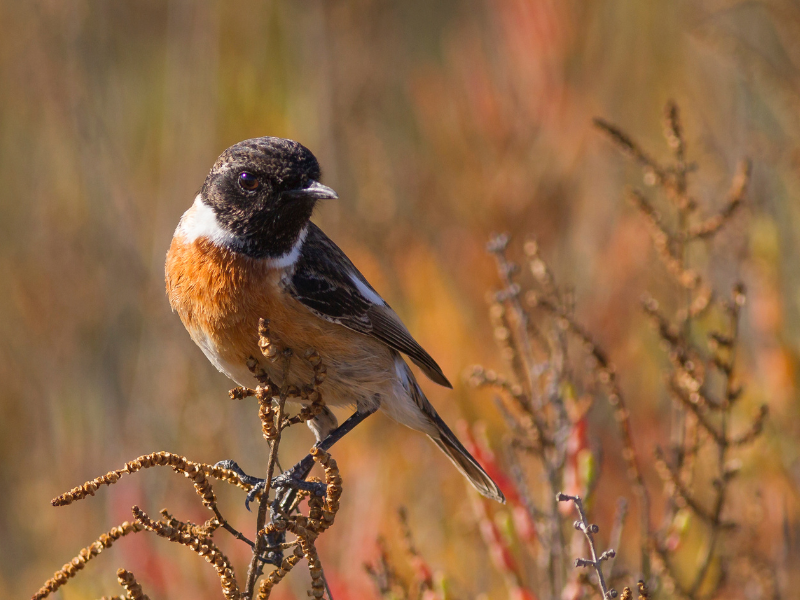
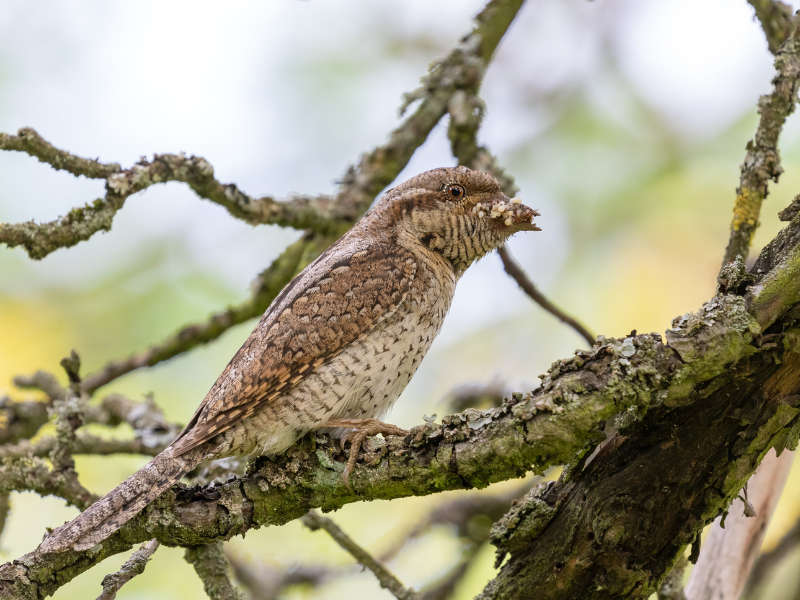
Wryneck
L: 16 – 18 cm / W: 25 – 27 cm
Its name comes from the movement it makes with its neck when it feels threatened, imitating a snake.
It is one of the most difficult birds of Pyrenees to see during the Tour due to its plumage designed for camouflage.
You can tell it apart, if you can, by its cryptic plumage. The males raise a small crest during the breeding season.
Hoopoe
Length: 16 – 18 cm / Wingspan: 25 – 27 cm
Unmistakable bird of Aragonese Pyrenees, abundant in the lowlands. In the north of the Peninsula, it behaves like a trans-Saharan migratory bird; it spends spring and summer in the Pyrenees.
Frequent in pastured agricultural areas, where it spends a lot of time on the ground looking for insects with its beak. It easily adapts to human presence.
In the Tour there is an observation point where it is relatively common to see them. When excited, it raises its 23-feather crest, a true gift of nature.
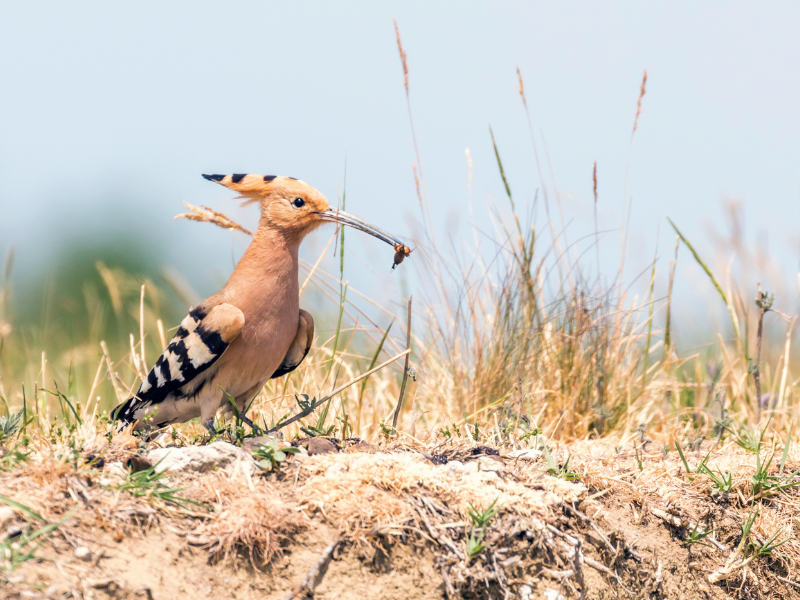
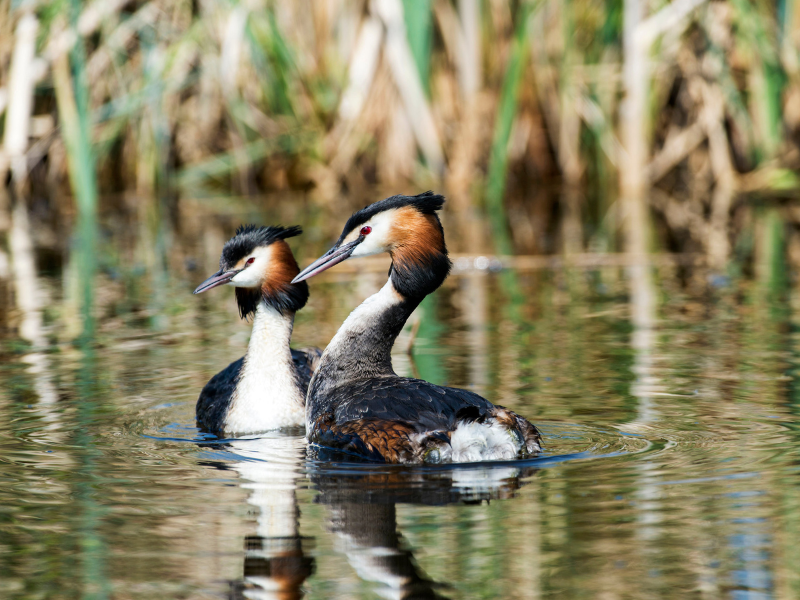
Great Crested Grebe
L: 46 – 51 cm / W: 59 – 73 cm
Pyrenean aquatic birds with beautiful plumage present all year round in the Pyrenean swamps and in the Sariñena lagoon.
We make key stops during the Tour to observe it. The females carry the chicks on their back during the summer, something very nice to see.
You can distinguish it by the characteristic cinnamon feathers on its head, which it shows off in the mating ritual.
Gray heron
L: 84 – 102 cm / W: 155 – 175 cm
The great bird of the aquatic environments of the Pyrenees. Visible both in summer and winter, although specimens from colder areas of Europe come in the latter season.
It feeds on fish, amphibians and invertebrates. During the Tour we visit the habitat of this and other aquatic birds.
It is the largest species of the aquatic environment that you can see in the Pyrenees, so there are no difficulties in distinguishing it.
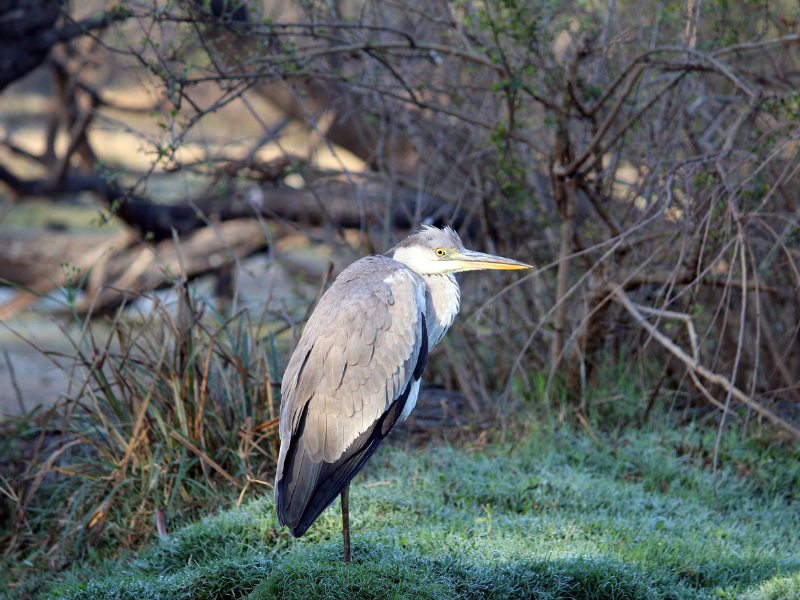
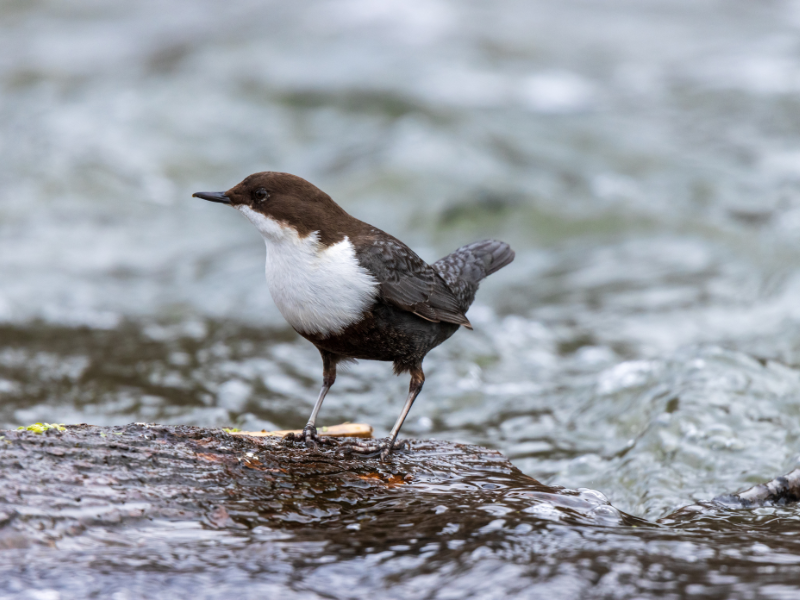
Dipper
Length: 17 – 20 cm
Bird of Pyrenees fully adapted to rapid mountain rivers. It is hypnotic to watch each of their dives into the water.
It feeds on small vertebrates that it catches while diving. Present in rapid mountain streams, especially in the Ordesa National Park and surroundings where we make stops.
You can differentiate it from the common blackbird by its tremendous dives and the frontal white spot.
Are you looking for a specific species to spot?
Write to me now by Whatsapp
Club Birding Aragón
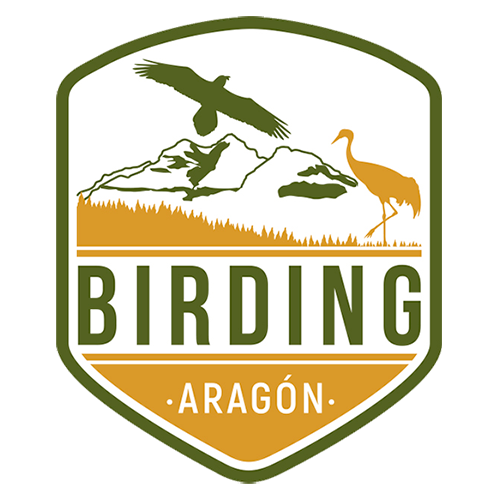
The Birding Aragón Product Club guarantees the specialization of birdwatching experiences based on quality criteria established by all its members.
Always look for this logo in case you decide to hire with another company. If you have already decided to come with us, but you have doubts: Write to me now.

